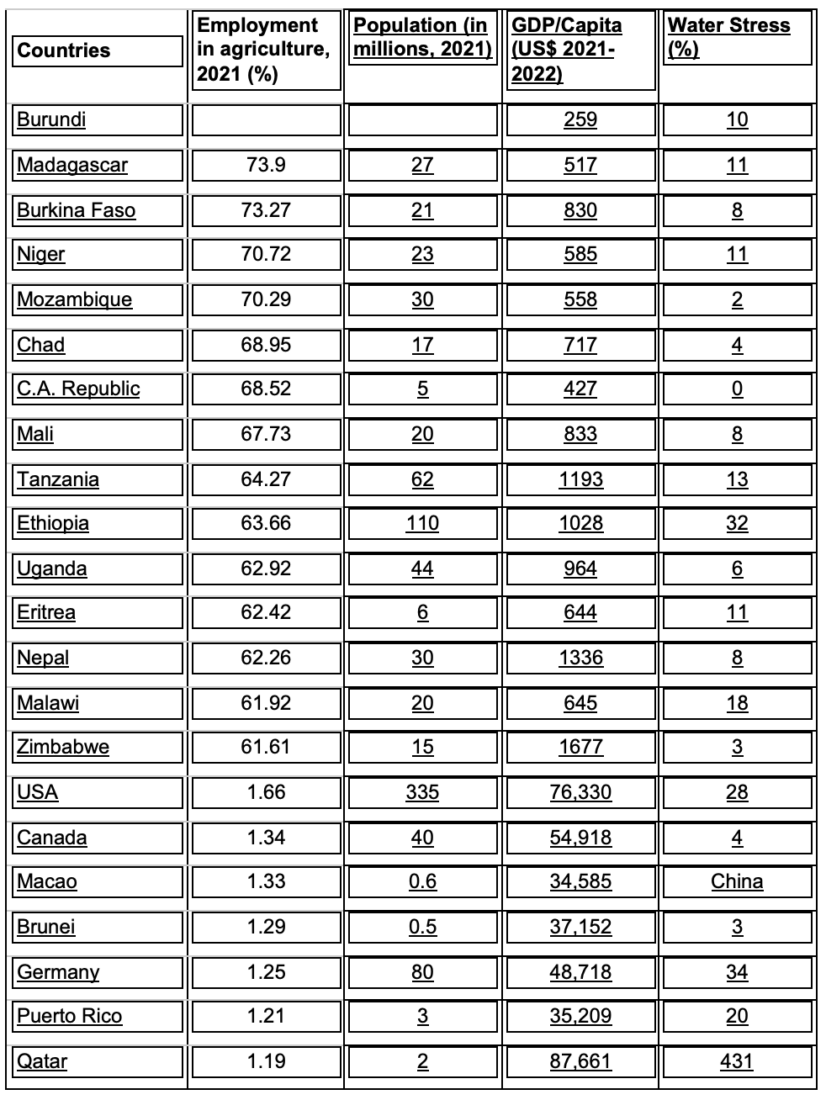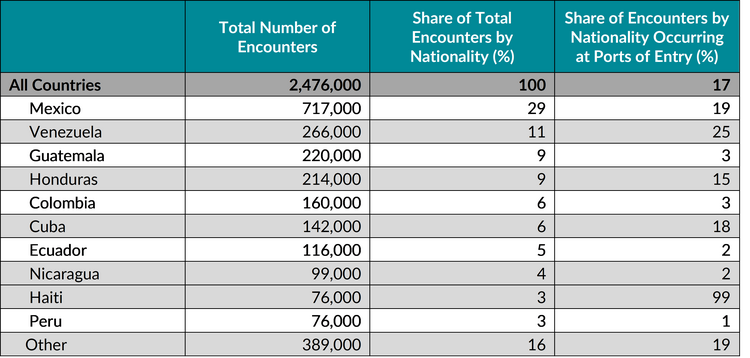Politically, the world is polarized. On the Right, the battle cry is to block immigration; on the Left, to pursue equity. Climate change tends to get lost in the chat but the Left generally goes along with the scientists in trying to mitigate the impact while many on the Right are still denying that humans are responsible (some of us much more than others). 2024 is a presidential election year in the US and this polarization is sharper than ever. Below are two short descriptions of the positions that the presidential candidate and Governor of Florida, Ron DeSantis, is taking on climate and immigration:
NYT – DeSantis, Undaunted by Florida Storms, Shrugs Off Climate Change
Instead, Mr. DeSantis has seemingly reverted to an old Republican Party line that climate change is happening naturally, without being accelerated by human behavior like the burning of fossil fuels. Decades of scientific research contradict that position. And it is also out of step with what polling shows many Americans believe.
NYT – DeSantis Pushes Toughest Immigration Crackdown in the Nation
The bills would expose people to felony charges for sheltering, hiring and transporting undocumented immigrants; require hospitals to ask patients their immigration status and report to the state; invalidate out-of-state driver’s licenses issued to undocumented immigrants; prevent undocumented immigrants from being admitted to the bar in Florida; and direct the Florida Department of Law Enforcement to provide assistance to federal authorities in enforcing the nation’s immigration laws.
Mr. DeSantis has separately proposed eliminating in-state college tuition for undocumented students and beneficiaries of the Obama-era Deferred Action for Childhood Arrivals program, known as DACA, who were brought to the United States as young children. The tuition law was enacted by his predecessor Rick Scott, now a Republican U.S. senator, in 2014.
Al Gore, the former Senator and Vice President tried to make the case that immigration and anthropogenic climate change are two sides of the same coin:
Former Vice President Al Gore spent part of his Christmas Eve warning Americans how “dire” the climate change situation really is.
“If we don’t take action, there could be as many as one billion climate refugees crossing international borders in the next several decades,” Gore told CNN’s Jake Tapper on “State of the Union.”
Gore doesn’t supply many details, so in this blog, I’m trying to provide some. Table 1 shows some of the essential ingredients. It shows 15 countries, mostly located in Africa, in which employment in agriculture constitutes more than 60% of the workforce and 15 countries where employment in agriculture amounts to less than 2% of the workforce. The table also provides data about all 30 countries, including population, wealth (GDP/Capita), and water stress. Water stress is measured in terms of “freshwater withdrawal as a proportion of available freshwater resources.” Water stress starts at 25% withdrawal. The various sources for the various data are given below the table. All the countries with major agricultural industries are poor (GDP/Capita smaller than $2,000). All the countries with very small employment in agriculture are rich (GDP/Capita greater than $30,000 except for Djibouti, which has other issues to deal with). All the data in Table 1 are real. The countries with critical water stress (greater than 25%) are rich and they have the means to supply their water from other sources than their freshwater reserves (desalination, import, etc. See the set of blogs on Arizona (July 4th and 11th, 2023). The only poor country on that list with serious water stress is Ethiopia. Ethiopia’s water stress stems from mismanagement of the Nile and the general unrest there. The other countries that are not on the list but are dependent on the Nile (Egypt, South Sudan, and Sudan) also show severe water stress (the list was created based on the percentage of employment in agriculture).
Now, imagine that climate change increases water stress so much that countries cannot irrigate their fields, the countries’ poverty limits their ability to import food, and 60% of their workforce can no longer work the land to support their family. They will try to uproot themselves and look for solutions in other countries. I wrote before about how the acceleration of climate change will also accelerate the number of these refugees.
Table 1 – Percentage employment in agriculture for the top 15 and bottom 15 countries


Data for percentage employed in agriculture were taken from The Global Economy.com. Data for population in Table 1, were taken from the CIA website’s World Factbook. Data for GDP/Capita in Table 1 are taken from the World Bank. (Some of the data for GDP/Capita in Table 1 are for 2022). Data for water stress in Table 1 are taken from the UN Water Portal.
Are these the refugees that are now crowding the southern US borders that the Republicans are so concerned about? This is a testable question. One can ask the southern border refugees where they are coming from. This was done and Table 2 shows the results. None of the countries that are mentioned in Table 2 is shown in Table 1 but the consequences of climate change on the ability of the Table 1 African countries are still in the pipeline.
Table 2 – Migrants’ Countries of Origin, by Share of Total Encounters and Share of Nationality Encountered at Ports of Entry, FY 2023 (Source: Migration Policy Institute)

The global impact of climate change on immigration was recently described in an NYT article that was based on UN data:
Olive groves have shriveled in Tunisia. The Brazilian Amazon faces its driest season in a century. Wheat fields have been decimated in Syria and Iraq, pushing millions more into hunger after years of conflict. The Panama Canal, a vital trade artery, doesn’t have enough water, which means fewer ships can pass through. And the fear of drought has prompted India, the world’s biggest rice exporter, to restrict the export of most rice varieties.
The United Nations estimates that 1.84 billion people worldwide, or nearly a quarter of humanity, were living under drought in 2022 and 2023, the vast majority in low- and middle-income countries. “Droughts operate in silence, often going unnoticed and failing to provoke an immediate public and political response,” wrote Ibrahim Thiaw, head of the United Nations agency that issued the estimates late last year, in his foreword to the report.
This piece is based on a recent UN report, Global Drought Snapshot 2023, which is likely the source for the Al Gore comment that I mentioned in the beginning of the blog. It lacks the country specificity that is mentioned in Table 1 and thus cannot serve as a tool to correlate with Table 2, which relates only to the situation at the US southern border.
The next blog will return to internal immigration within the US.

Thanks for sharing this info